
Magic, sometimes spelled magick, is an ancient practice rooted in rituals, spiritual divinations, and/or cultural lineage—with an intention to invoke, manipulate, or otherwise manifest supernatural forces, beings, or entities in the natural world. It is a categorical yet often ambiguous term which has been used to refer to a wide variety of beliefs and practices, frequently considered separate from both religion and science.
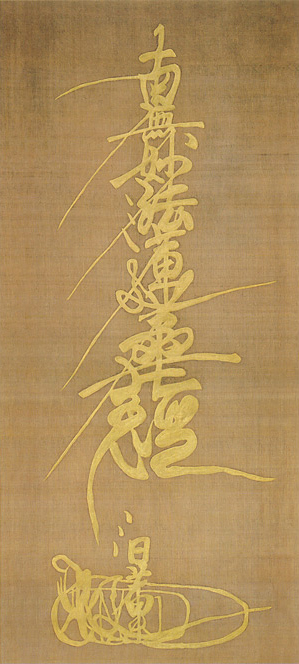
Nam Myōhō Renge Kyō (南無妙法蓮華経) are Japanese words chanted within all forms of Nichiren Buddhism. In English, they mean "Devotion to the Mystic Law of the Lotus Sutra" or "Glory to the Dharma of the Lotus Sutra".
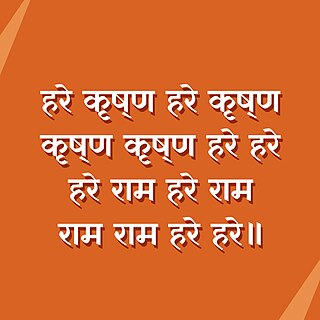
The Hare Krishna mantra, also referred to reverentially as the Mahā-mantra, is a 16-word Vaishnava mantra mentioned in the Kali-Saṇṭāraṇa Upaniṣad. In the 15th century, it rose to importance in the Bhakti movement following the teachings of Chaitanya Mahaprabhu. This mantra is composed of three Sanskrit names – "Krishna", "Rama", and "Hare".
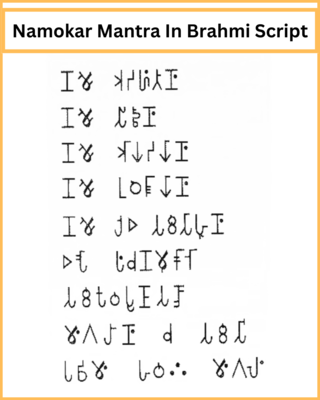
A mantra or mantram is a sacred utterance, a numinous sound, a syllable, word or phonemes, or group of words in Sanskrit, Pali and other languages believed by practitioners to have religious, magical or spiritual powers. Some mantras have a syntactic structure and literal meaning, while others do not.

An incantation, a spell, a charm, an enchantment or a bewitchery, is a magical formula intended to trigger a magical effect on a person or objects. The formula can be spoken, sung or chanted. An incantation can also be performed during ceremonial rituals or prayers. In the world of magic, wizards, witches, and fairies allegedly perform incantations.
The Atharva Veda or Atharvana Veda is the "knowledge storehouse of atharvāṇas, the procedures for everyday life". The text is the fourth Veda, and is a late addition to the Vedic scriptures of Hinduism.
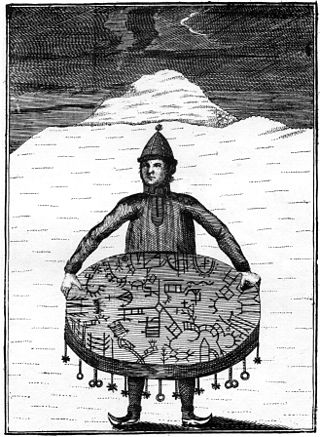
A noaidi is a shaman of the Sami people in the Nordic countries, playing a role in Sámi religious practices. Most noaidi practices died out during the 17th century, most likely because they resisted Christianization of the Sámi people and the king's authority. Their actions were referred to in courts as "magic" or "sorcery". Several Sámi shamanistic beliefs and practices are similar to those of some Siberian cultures.

Filipino witches are the users of black magic and related practices from the Philippines. They include a variety of different kinds of people with differing occupations and cultural connotations which depend on the ethnic group they are associated with. They are completely different from the Western notion of what a witch is, as each ethnic group has their own definition and practices attributed to witches. The curses and other magics of witches are often blocked, countered, cured, or lifted by Filipino shamans associated with the indigenous Philippine folk religions.
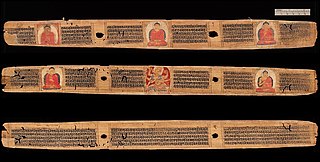
Dharanis, also known as Parittas, are Buddhist chants, mnemonic codes, incantations, or recitations, usually the mantras consisting of Sanskrit or Pali phrases. Believed to be protective and with powers to generate merit for the Buddhist devotee, they constitute a major part of historic Buddhist literature. Many of these chants are in Sanskrit and Pali, written in scripts such as Siddhaṃ as well as transliterated into Chinese, Korean, Japanese, Vietnamese, Sinhala, Thai and other regional scripts. They are similar to and reflect a continuity of the Vedic chants and mantras.
Witchcraft in Latin America, known in Spanish as brujería, is a complex blend of indigenous, African, and European influences. Indigenous cultures had spiritual practices centered around nature and healing, while the arrival of Africans brought syncretic religions like Santería and Candomblé. European witchcraft beliefs merged with local traditions during colonization, contributing to the region's magical tapestry. Practices vary across countries, with accusations historically intertwined with social dynamics. A male practitioner is called a brujo, a female practitioner is a bruja.
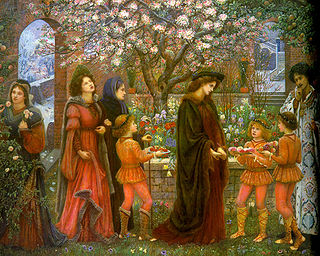
A magician, also known as an archmage, mage, magus, magic-user, spellcaster, enchanter/enchantress, sorcerer/sorceress, warlock, witch, or wizard, is someone who uses or practices magic derived from supernatural, occult, or arcane sources. Magicians are common figures in works of fantasy, such as fantasy literature and role-playing games, and enjoy a rich history in mythology, legends, fiction, and folklore.

Kaluu is a fictional character appearing in American comic books published by Marvel Comics.

A dukun is an Indonesian term for shaman. Their societal role is that of a traditional healer, spirit medium, custom and tradition experts and on occasion sorcerers and masters of black magic. In common usage the dukun is often confused with another type of shaman, the pawang. It is often mistranslated into English as "witch doctor" or "medicine man". Many self-styled dukun in Indonesia are simply scammers and criminals, preying on people who were raised to believe in the supernatural.
Eko Eko Azarak is the opening phrase from a Wiccan chant. It is also known as the "Witch's chant", the "Witch's rune", or the "Eko Eko chant". The following form was used by Gerald Gardner, considered as the founder of Wicca as an organized, contemporary religion.
Kolgrim, also spelled Kollgrim or Kolgrimr, was an alleged Norse sorcerer who was burned in Greenland for sorcery and adultery.

In Old Norse, seiðr was a type of magic which was practised in Norse society during the Late Scandinavian Iron Age. The practice of seiðr is believed to be a form of magic which is related to both the telling and the shaping of the future. Connected to the Old Norse religion, its origins are largely unknown, and the practice of it gradually declined after the Christianization of Scandinavia. Accounts of seiðr later made it into sagas and other literary sources, while further evidence of it has been unearthed by archaeologists. Various scholars have debated the nature of seiðr, some of them have argued that it was shamanic in context, involving visionary journeys by its practitioners.

Sirappuli Nayanar, also known as Sirappuli, Sirapuli Nayanar, Sirappuliyar (Chirappuliyar), was a Nayanar saint, venerated in the Hindu sect of Shaivism. He is generally counted as the thirty-fifth in the list of 63 Nayanars. Sirappuli Nayanar is described to have served the devotees of the god Shiva and worshipped the god with various ritual practices.
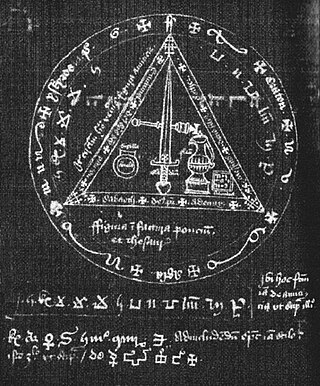
During the Middle Ages, magic took on many forms. Instead of being able to identify one type of magic user, there were many who practiced several types of magic in these times, including monks, priests, physicians, surgeons, midwives, folk healers, and diviners. The practice of “magic” often consisted of using medicinal herbs for healing purposes. Classical medicine entailed magical elements. They would use charms or potions in hopes of driving out a sickness. People had strongly differing opinions as to what magic was, and because of this, it is important to understand all aspects of magic at this time.
The Witch trials in Orthodox Russia were different in character than the witch trials in Roman Catholic and Protestant Europe due to the differing cultural and religious background. It is often treated as an exception to modern theories of witch-hunts, due to the perceived difference in scale, the gender distribution of those accused, and the lack of focus on the demonology of a witch who made a pact with Satan and attended a Witches' Sabbath, but only on the practice of magic as such.
In Islamic culture and Muslim communities throughout the world, magic is "widespread and pervasive". Magic or sorcery and divination, or occultism, encompass a wide range of practices. These include protection from black magic, the evil eye, demons, and evil jinn, which are thought to bring "illness, poverty, and everyday misfortunes"; or alternately practices seeking to bring "good fortune, health, increased status, honor, and power". Techniques include evocation, casting lots, the production of amulets and other magical equipment. Magic has been called a "vital element of everyday life and practice" in both the contemporary and historical Islamic world, the topics generating a "staggering" amount of "literature."













